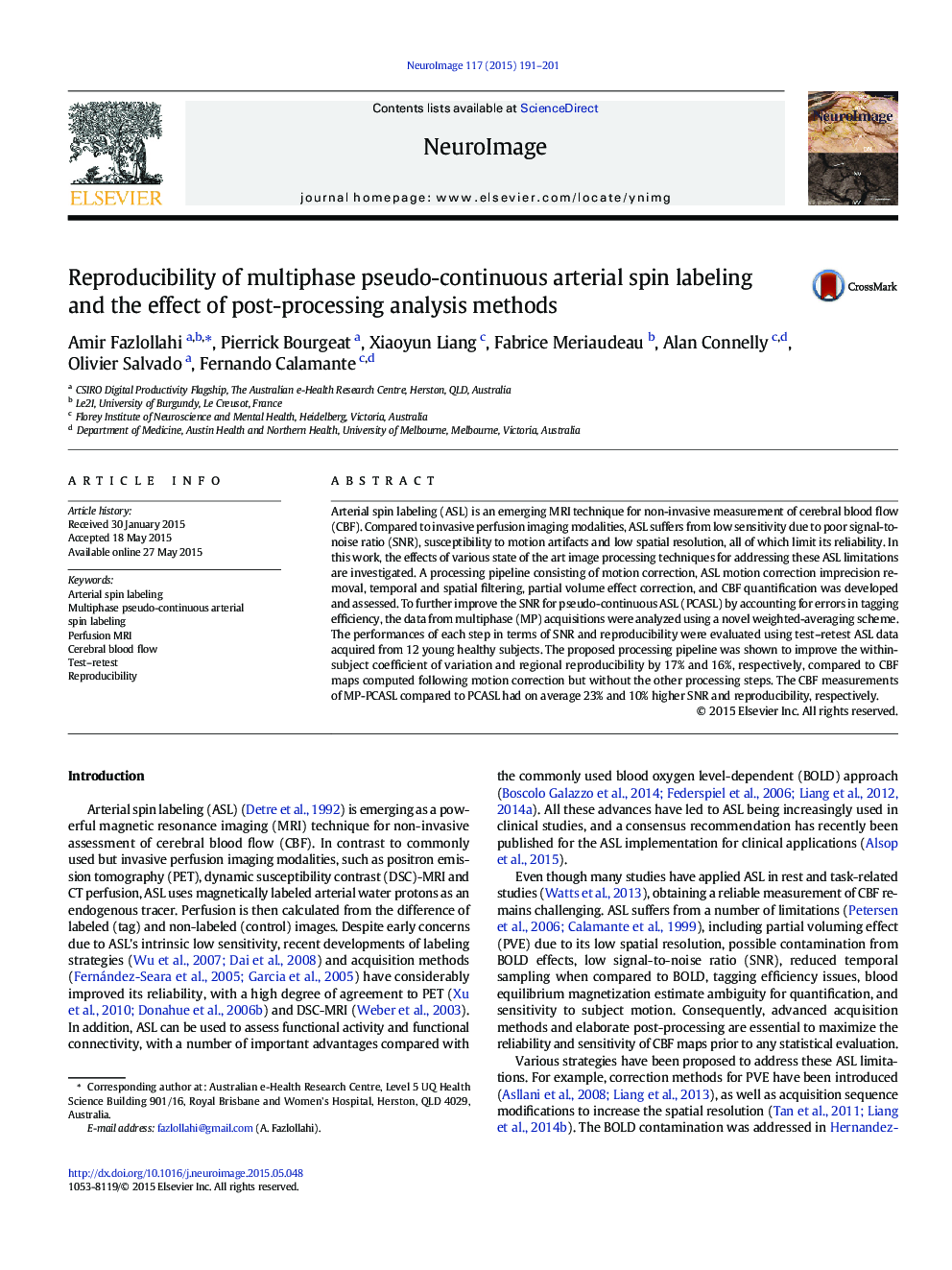| Article ID | Journal | Published Year | Pages | File Type |
|---|---|---|---|---|
| 6025023 | NeuroImage | 2015 | 11 Pages |
â¢The reproducibility of multiphase (MP) pseudo-continuous ASL (PCASL) is characterized.â¢We propose an image processing pipeline for improving ASL reproducibility.â¢MP-PCASL is shown to have higher signal-to-noise ratio and reproducibility than PCASL.â¢The proposed pipeline can improve the reliability and sensitivity of ASL.â¢An effective image post-processing should promote ASL in clinical applications.
Arterial spin labeling (ASL) is an emerging MRI technique for non-invasive measurement of cerebral blood flow (CBF). Compared to invasive perfusion imaging modalities, ASL suffers from low sensitivity due to poor signal-to-noise ratio (SNR), susceptibility to motion artifacts and low spatial resolution, all of which limit its reliability. In this work, the effects of various state of the art image processing techniques for addressing these ASL limitations are investigated. A processing pipeline consisting of motion correction, ASL motion correction imprecision removal, temporal and spatial filtering, partial volume effect correction, and CBF quantification was developed and assessed. To further improve the SNR for pseudo-continuous ASL (PCASL) by accounting for errors in tagging efficiency, the data from multiphase (MP) acquisitions were analyzed using a novel weighted-averaging scheme. The performances of each step in terms of SNR and reproducibility were evaluated using test-retest ASL data acquired from 12 young healthy subjects. The proposed processing pipeline was shown to improve the within-subject coefficient of variation and regional reproducibility by 17% and 16%, respectively, compared to CBF maps computed following motion correction but without the other processing steps. The CBF measurements of MP-PCASL compared to PCASL had on average 23% and 10% higher SNR and reproducibility, respectively.
Graphical abstractDownload high-res image (61KB)Download full-size image
